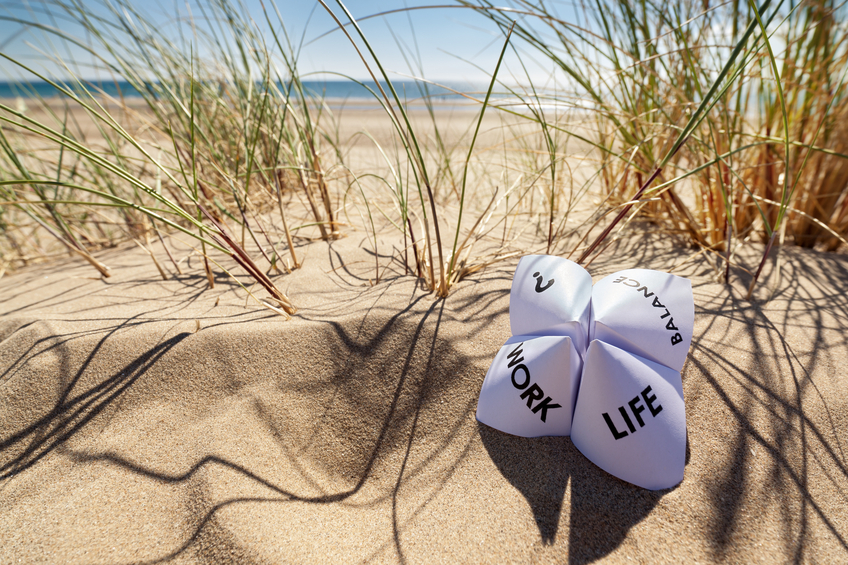Work-life balance is a topic often discussed but seldom achieved – that’s if a study by the American Sociological Review is anything to go by, which finds that as many as 70% of adults are struggling to find a work-life system that works for them.
“It's important for women to ask for help and to accept help and I don't think it's particularly helpful to criticise people's choices. It's what's right for you.”
Working It Out Author, Jayne Anderson
“Works for them” might just hold the key to solving the problem. That’s according to former TV producer turned work-life balance investigator Jayne Anderson, who quit her dream job to spend almost a decade interviewing Australia’s highest-profile working women in a bid to uncover how they achieved balance between never-ending business hours and life at home.
After eight years researching her book Working It Out: Career, Family And You, she arrived at the conclusion that there is “no single right way to combined parenthood and paid work”.
Though her book addresses the challenges faced by working mothers, work-life balance is something everyone, everywhere contends with as a challenging goal.
There are family and social relationships beyond parent-child to maintain; then there are the pursuits of hobbies, interests and passions to factor in, not to mention exercise and good nutrition to consider, as well as that other crucial ingredient to health and wellbeing: rest time.
If you’re one of the majority still struggling to keep everything in check, take a look at how these women from around the world have arrived at their current place of balance – and the lessons they learned along the way.
ANISHA SINGH, FOUNDER OF MYDALA, DELHI
“I was seven months pregnant when I was searching for an investor for [local services marketing platform] MyDala. People called me crazy. I told them I was having two babies at one go. When we started, we had 52 competitors, and 7 players had more funding than us. I have built it brick by brick.
“Work is not my life. Everyone in my office knows that 7-9pm is family time and I don't pick calls or reply to texts at that time. We also have Saturdays off. There were days when I had the working woman's guilt – 'Am I a good wife? Am I a good mother?' – but I have outgrown that. My stress busters are my kids. They have taught me things I didn't know, like patience,” she says.
The lessons you can take away…
- Take regular, digital detoxes: Carve out realistic amounts of regular time and space you’ll use exclusively for family, hobbies or downtime and stick to it.
- If work emails are encroaching too much on your personal life, negotiate with your teams or boss how much time you are willing to put in out of hours, and when you would like to be able to switch off completely. You might just find that inviting discussion around this issue highlights that others are feeling the pressure too.
- You’re probably used to conducting SWOT analyses of your workplace performance; but do you regularly take stock of the lessons you’re learning and the skills you’re acquiring through your home-life duties and extracurricular activities? They absolutely count too.
CARLA CHRISTOFFERSON, MANAGING PARTNER OF THE O'MELVENY & MYERS LLP, LOS ANGELES
When she was a junior partner at her law firm, Christofferson received an upward appraisal from her teams. She was surprised to find that though they were all grateful of her insistence that they strike a balance between their professional and personal lives, they sometimes struggled to get it right because they noticed that she herself was often staying late at the office or emailing into the evening.
She realised that if she wanted her teams to achieve balance, she needed to be a role model for them.
Socialising was something that was important to her, and after a few false starts at trying to establish a routine of seeing friends and enjoying her leisure time, she realised she needed to plan things in a way that meant she couldn’t pull out at the last minute.
One example saw her buying upfront a season’s worth of theatre tickets to shows she wanted to see.
Maintaining her programme of enjoyable nights out meant she had to address another big problem in her working life: her reluctance to say “no”: “I went through many of years saying ‘yes’.
It’s important to take every opportunity you can, but then you have to know when to say ‘no’. [I learned to ask myself] ‘Is this good for me and the firm, or just the firm?’ Be careful with who deserves you and your time. Treat yourself like a top shelf item.”
The lessons you can take away…
- As a team leader, make work-life balance something that is discussed openly in your team. If you go through a period of working and communicating extensively outside of office hours, acknowledge what is happening and the impact it’s having. Be a role model for how you want your teams to manage their time and lives outside work.
- Strike a balance between putting your hand up for good opportunities and saying “no” when you’re already operating at maximum capacity. Easier said than done, particularly in your early career. Find some tips here.
- To ensure you stick to your ideal work-life balance scenario, you may need to plan the life elements every bit as much as you do the work elements.
CHELSEA FAGAN, FINANCIAL JOURNALIST, NEW YORK CITY
“A lot of my validation comes from my work,’ writes Fagan. “But I have had to take measured, conscious steps to make sure that … validation doesn’t creep over the rest of my life.
“For me, I have created the ‘Rule of Four’ to make sure I am constantly diversified and balanced in this regard. [It’s] simple — I must always have four concrete, tangible things in my life that make me feel happy, that make me feel like myself, that I devote time and energy to, and that I am actively constructing. (Four is a number I chose because it feels the most balanced and manageable, but yours might be slightly different.)
“I must be able to name them at a moment’s notice, and they must be as precious to me as work. Those for things, right now, are my [creative] work, my partnerships, cooking and becoming a better, more versatile cook, and traveling to see/hosting the many friends that I’m lucky enough to have far away from me.”
The lessons you can take away…
- Work out what work-life balance means to you. What activities do you need to make time for in order to be happy? What points are you willing to negotiate on during busier work times? Which are you never happy to compromise on at all costs?
- How you define work-life balance and whether or not you’re achieving it could change often depending on your changing life and work circumstances. Review your plan regularly and ask if it’s still working for you or if you need to tweak.
JAYNE ANDERSON, PRODUCER AND WRITER, SYDNEY
After writing a book on how women in Australia juggle careers with parenthood, Anderson arrived at the following conclusions:
- Partners are part of the solution. Women should ask their partner for help and not try and do everything themselves… and when their partner does help, they shouldn't be criticised about the way they do things.
- Couples need to schedule holidays or dates and have something to look forward to.
- When life is busy, the easiest thing to give up is time for yourself. You are important too. It doesn’t matter what you do; make time to go for a walk or go to a yoga class, ask your partner to look after the children so you can sleep in one morning. By looking after yourself and regularly doing things that make you feel good, you should be better able to face the demands of each day and better able to look after the people in your care.





